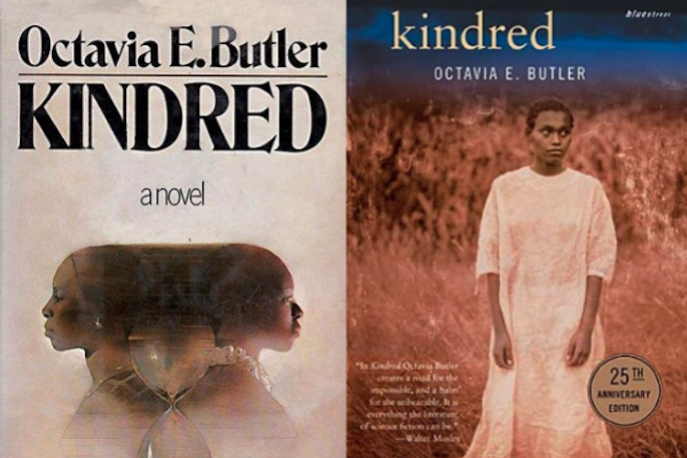
By: Ellen C. Caldwell and Christine Montgomery
Book Chapter for: The Bloomsbury Handbook to Octavia E. Butler
In Octavia E. Butler’s Kindred (1979), Edana Franklin (called Dana) feels inexplicably dizzy while unpacking her books during a move into her new home in Altadena, California, in 1976.
Her familiar surroundings disappear, and she finds herself in an open field next to a wide river where she immediately spots a drowning child. After pulling him from the river and resuscitating him, the boy recovers. But his father, who has rushed to the scene with his wife, aims a shotgun at Dana’s head. As Dana tries to explain that she was saving their son, she returns to her home, just as inexplicably as she came before the click of the gun’s trigger.
Though the setting and scenario feel disjointed to Dana, it is not until her next visit that she learns that the young boy she rescued is her white great-grandfather several times removed, Rufus Weylin. She has traveled back in time to 1815 to the Weylin plantation in Maryland for the purpose, she believes, of ensuring Rufus’s survival and therefore her lineage. How Dana time travels, from 1976 to the nineteenth century, and across space, from California to Maryland, is not as important as the fact that this spatiotemporal juxtaposition allows Dana to experience the past even though she believes herself to be far removed from slave history. Butler privileges the “socially dead,” to use Orlando Patterson’s phrase, as Dana is literally transported back to her ancestors. And, it is only when Dana believes she will die that she returns to her present time. In fact, she quite literally cuts her fifth trip to slavery short by slitting her wrists to get back to 1976…
